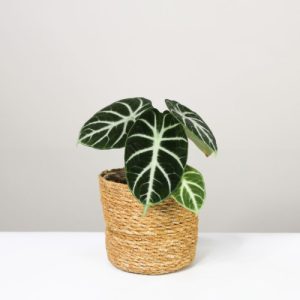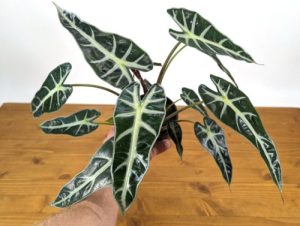- English
- Chinese
- French
- German
- Portuguese
- Spanish
- Russian
- Japanese
- Korean
- Arabic
- Irish
- Greek
- Turkish
- Italian
- Danish
- Romanian
- Indonesian
- Czech
- Afrikaans
- Swedish
- Polish
- Basque
- Catalan
- Esperanto
- Hindi
- Lao
- Albanian
- Amharic
- Armenian
- Azerbaijani
- Belarusian
- Bengali
- Bosnian
- Bulgarian
- Cebuano
- Chichewa
- Corsican
- Croatian
- Dutch
- Estonian
- Filipino
- Finnish
- Frisian
- Galician
- Georgian
- Gujarati
- Haitian
- Hausa
- Hawaiian
- Hebrew
- Hmong
- Hungarian
- Icelandic
- Igbo
- Javanese
- Kannada
- Kazakh
- Khmer
- Kurdish
- Kyrgyz
- Latin
- Latvian
- Lithuanian
- Luxembou..
- Macedonian
- Malagasy
- Malay
- Malayalam
- Maltese
- Maori
- Marathi
- Mongolian
- Burmese
- Nepali
- Norwegian
- Pashto
- Persian
- Punjabi
- Serbian
- Sesotho
- Sinhala
- Slovak
- Slovenian
- Somali
- Samoan
- Scots Gaelic
- Shona
- Sindhi
- Sundanese
- Swahili
- Tajik
- Tamil
- Telugu
- Thai
- Ukrainian
- Urdu
- Uzbek
- Vietnamese
- Welsh
- Xhosa
- Yiddish
- Yoruba
- Zulu
- Kinyarwanda
- Tatar
- Oriya
- Turkmen
- Uyghur

Alocasia plants are well-known in the horticulture scene for their unusual shapes and amazing foliage. Not just for their great size, but also for their diversity of forms and textures, these plants’ leaves are among their most arresting characteristics. From heart-shaped to arrow-shaped, from smooth surfaces to patterns with noticeable veins, each leaf of Alocasia plants grabs people’s attention with its variety and visual impact. She is a masterwork of nature.

Alocasia Dragon Scale
Usually large and thick, the leaves have smooth or wavy edges and a distinctive shine from their surface covering coating of natural wax. Along with adding more decorative value, this shine shields the leaves from environmental elements and intense sunlight. Although Alocasia plants have predominantly dark green leaves, their hue may reveal a gradation from blue-green to yellow-green under varying lighting and growth circumstances, therefore adding an enigmatic and changeable beauty.
Apart from their survival, the leaves of Alocasia plants are a treasure in the hearts of those who like gardening. Their development and presentation not only show the state of the plants but also perfectly combine gardening art with natural beauty. Deeper study of the leaf traits of Alocasia plants will reveal additional mysteries about these remarkable organisms.
Alocasia Leaf Texture and Vues
Not only do alocasia leaves’ unusual textures and intricate veining appeal, but their physiological purposes depend on these qualities as well. Water and nutrients are carried via the veins of a leaf, often known as vascular bundles; their distribution patterns range from parallel veins to reticulated veins, each pattern suited to the growth requirements and environmental circumstances of the plant.
In Alocasia, the veins can show a clear network of main and subsidiary veins that weaves a complicated pattern. This arrangement not only increases the leaf’s support but also guarantees that all of its components get enough water and nutrients, therefore improving the transport efficiency.
The leaves have similarly remarkable texture. Although Alocasia leaves typically have a smooth surface, in certain kinds little structures on the surface of the leaves or protrusions of the veins may cause minor bumps and grooves to be seen. These textures not only improve the leaves’ appearance but could also aid to lower water evaporation by adding another layer of protection for them.
Rich decorative appeal for gardeners as well as biological traits that enable Alocasia to flourish in a range of environmental conditions define the veins and textures of these plants.
The alocasia leaf development cycle
Alocasia’s leaf development cycle is a normal one, from budding to maturity then to senescence and last shedding. This cycle not only reveals the consistency of plant development but also a means of adaptation for plants against environmental changes.
New leaves grow from leaf buds on bud stage. Usually fragile and curling, the newly formed leaves need appropriate temperature and humidity to encourage their unfolding. Right now, the leaves develop quickly and are very sensitive to surroundings.
The leaves progressively unfurl and achieve their full shape over time. Complete structure and purpose abound from mature leaves, which also enable efficient photosynthesis and transpiration. Right now, the leaves’ texture and color are also most different.
Following the maturity stage, the leaves will go into a growth peak when their size and form approach the maximum and photosynthesis efficiency is maximal. For Alocasia plants at this stage, their leaves provide a great supply of energy and nutrients.
The leaves will progressively mature as the seasons or environmental circumstances change. Senescent leaves might seem smaller, lighter in color, and with noticeable veins. In the plant life cycle, this is a normal occurrence and a warning that the plant is getting ready for a fresh cycle of development.
Eventually, the aged leaves will fall off the plant to provide space and resources for the development of new ones. By means of leaf dropping, the plant assists to lower energy use and encourage fresh development.
Apart from reflecting the physiological condition of the plant, Alocasia’s leaf development cycle is a crucial guide for garden management. Knowing this cycle will enable those who like gardening to maintain the plants better and guarantee their healthy developm
Cultural and metaphorical connotations of calla lily leaves
With its amazing leaves and distinctive appearance, the calla lily plant has great symbolic value and belongs in many different civilizations all over.
Because of their great size and vigor, the leaves of the calla lily plant are considered in many civilizations as a sign of wealth and success. Often used to adorn religious and ceremonial venues, they stand for plenty and good fortune. Calla lily leaves are used as decorations in certain areas at traditional weddings to represent the prosperity and pleasure of the marital life.
Furthermore relevant to spiritual and religious views are the calla lily plant’s leaves. Some civilizations see them as holy and link them to spiritual cleansing and relationships to the gods. Because of their great vigor and fast development, the leaves of the calla lily are seen as an emblem of rebirth and eternity.
Modern home design sometimes expresses a tropical flair and natural beauty using the leaves of the calla lily plant. Their presence may provide the inside environment some life and represent harmonic cohabitation with the surroundings.
It is interesting to note that the calla lily plant might also be connected in certain cultures with some negative meanings. For instance, it is sometimes used to represent difficulty and challenge as it might be challenging to sustain under specific situations.
From wealth and auspiciousness to spiritual and religious symbolism to natural beauty in contemporary decorating, the leaves of the Alocasia plant have a range of metaphorical connotations in many civilizations. They comprise an element of human existence and civilization. Knowing these symbolic meanings can help us to grasp not just the Alocasia plant but also many cultural traditions.

Alocasia
The unique qualities of the Alocasia genus leaves are well-known; typically, they possess these: The leaves are mostly dark green, with a smooth, shiny surface, occasionally accompanied by white or yellow marks; the veins are obvious, usually distributed in a network, which enhances the structure and transport efficiency of the leaves; the leaves are thick in texture, with smooth or wavy edges. These traits not only show the Alocasia genus plants’ environmental adaptation but also provide very great esthetic value.
Previous News
Growth rate of Chinese DieffenbachiaNext News
Cobra Arrowroot Indoor Maintenance Environment


